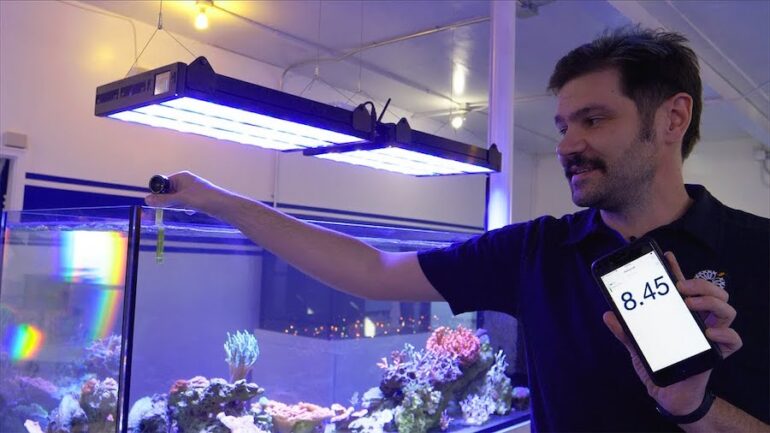After temperature and salinity, the pH of aquarium water is one of the most important parameters of reef aquarium chemistry. In freshwater tanks soft water fish have been adapted to higher pH and vice versa, and saltwater fish are not picky either, but our beloved corals need a higher pH to grow at a normal rate.
‘Light enhanced calcification’ is a well described phenomenon in reef building corals. In bright light photosynthetic corals actually create a high pH condition between the skeleton and the tissue to precipitate aragonite crystals of calcium and carbonate, the two elements we add most to our tanks.
Reefers have been content to have a pH that fluctuates between 7.8 to 8.2, natural seawater used to have an average pH of 8.2. However, due to increased carbon dioxide in the atmosphere and its subsequent dissolution into seawater, the ocean has acidified and now has a pH of 8.1, slowing coral growth and calcification of all marine life.
For a hobby that is practically obsessed with growing aquarium corals as fast as possible, we don’t do nearly enough to buffer the pH of aquariums to natural levels or higher. At the Reef Builders Studio a centralized kalkwasser delivery system was designed to keep the pH of all the systems at 8.2 or higher. Through generous addition of Kalkwasser we aim for a baseline of pH 8.2 with daytime peaks up to 8.5 with very happy and fast growing corals as a result.
In this video we discuss the three elements needed to properly manage the pH of our reef tanks and systems including an accurate and reliable pH probe, a programmable dosing pump, and kalkwasser reactors all over the place. We had no idea that this video would strike such a chord with its viewers and judging from the deluge of comments and questions it’s clear that pH is a topic we’ll be revisiting again in further detail for future videos and articles.



